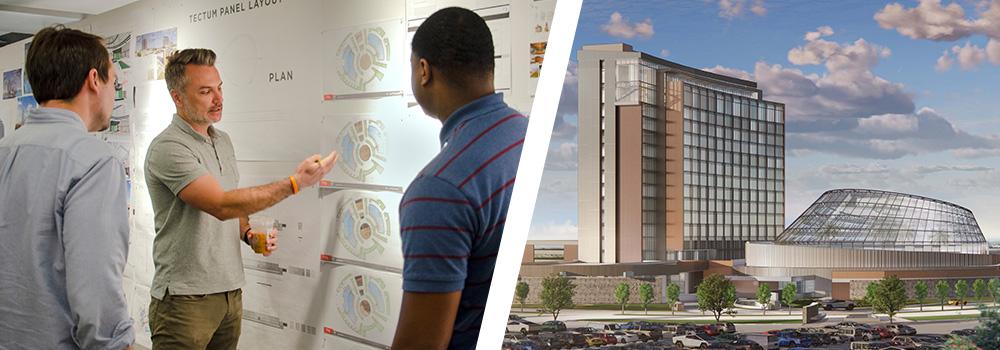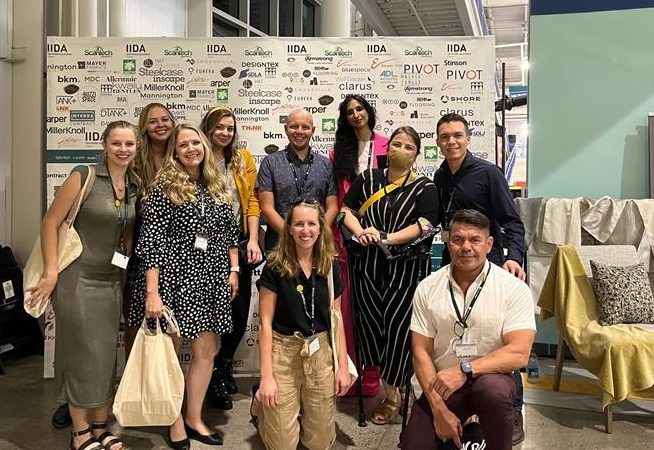Elevating Events at Four Winds South Bend
See full article in Casino Style Magazine: Winds of Change
Winds of Change
Ribbon Town Conference and Events Center - Four Winds South Bend Casino Resort
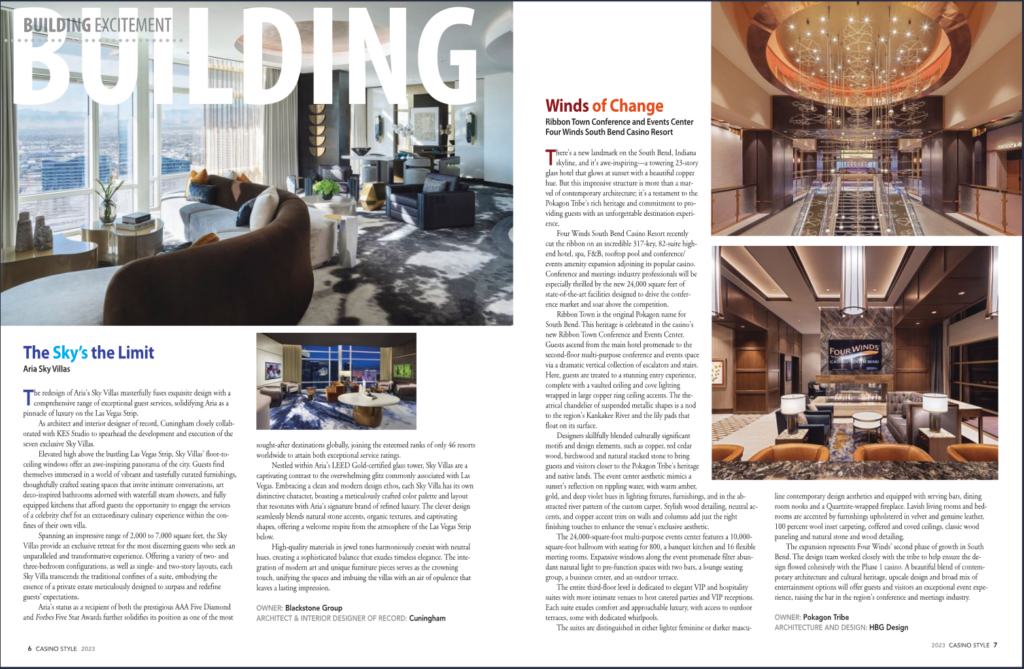 There’s a new landmark on the South Bend, Indiana skyline, and it’s awe-inspiring—a towering 23-story glass hotel that glows at sunset with a beautiful copper hue. But this impressive structure is more than a marvel of contemporary architecture; it’s a testament to the Pokagon Tribe’s rich heritage and commitment to providing guests with an unforgettable destination experience.
There’s a new landmark on the South Bend, Indiana skyline, and it’s awe-inspiring—a towering 23-story glass hotel that glows at sunset with a beautiful copper hue. But this impressive structure is more than a marvel of contemporary architecture; it’s a testament to the Pokagon Tribe’s rich heritage and commitment to providing guests with an unforgettable destination experience.
Four Winds South Bend Casino Resort recently cut the ribbon on an incredible 317-key, 82-suite high-end hotel, spa, F&B, rooftop pool and conference/ events amenity expansion adjoining its popular casino. Conference and meetings industry professionals will be especially thrilled by the new 24,000 square feet of state-of-the-art facilities designed to drive the conference market and soar above the competition.
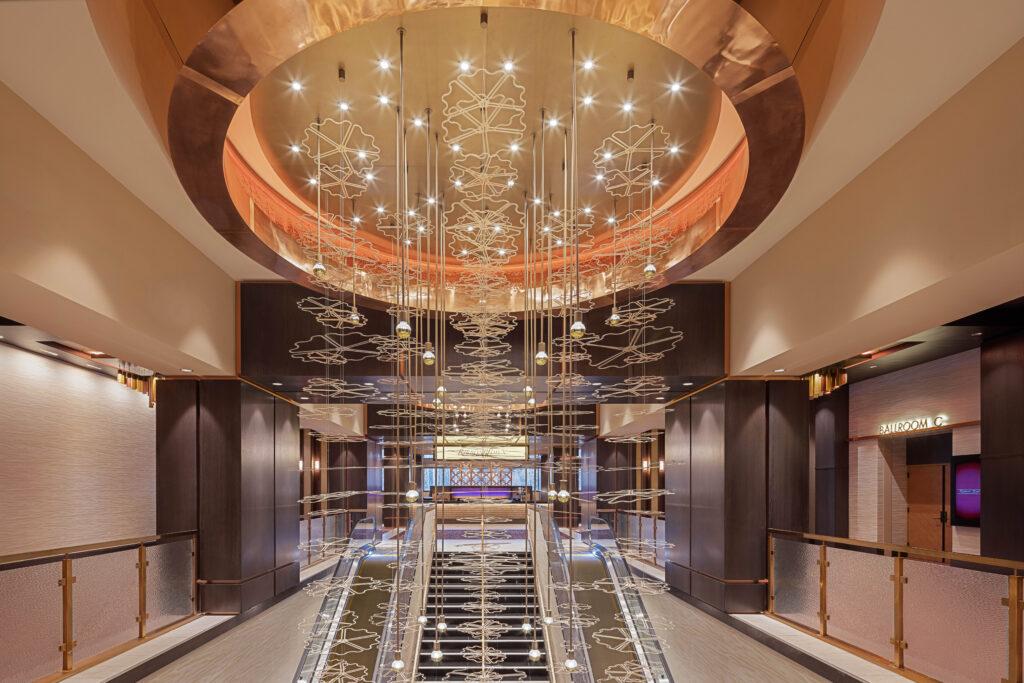 Ribbon Town is the original Pokagon name for South Bend. This heritage is celebrated in the casino’s new Ribbon Town Conference and Events Center. Guests ascend from the main hotel promenade to the second-floor multi-purpose conference and events space via a dramatic vertical collection of escalators and stairs. Here, guests are treated to a stunning entry experience, complete with a vaulted ceiling and cove lighting wrapped in large copper ring ceiling accents. The theatrical chandelier of suspended metallic shapes is a nod to the region’s Kankakee River and the lily pads that float on its surface.
Ribbon Town is the original Pokagon name for South Bend. This heritage is celebrated in the casino’s new Ribbon Town Conference and Events Center. Guests ascend from the main hotel promenade to the second-floor multi-purpose conference and events space via a dramatic vertical collection of escalators and stairs. Here, guests are treated to a stunning entry experience, complete with a vaulted ceiling and cove lighting wrapped in large copper ring ceiling accents. The theatrical chandelier of suspended metallic shapes is a nod to the region’s Kankakee River and the lily pads that float on its surface.
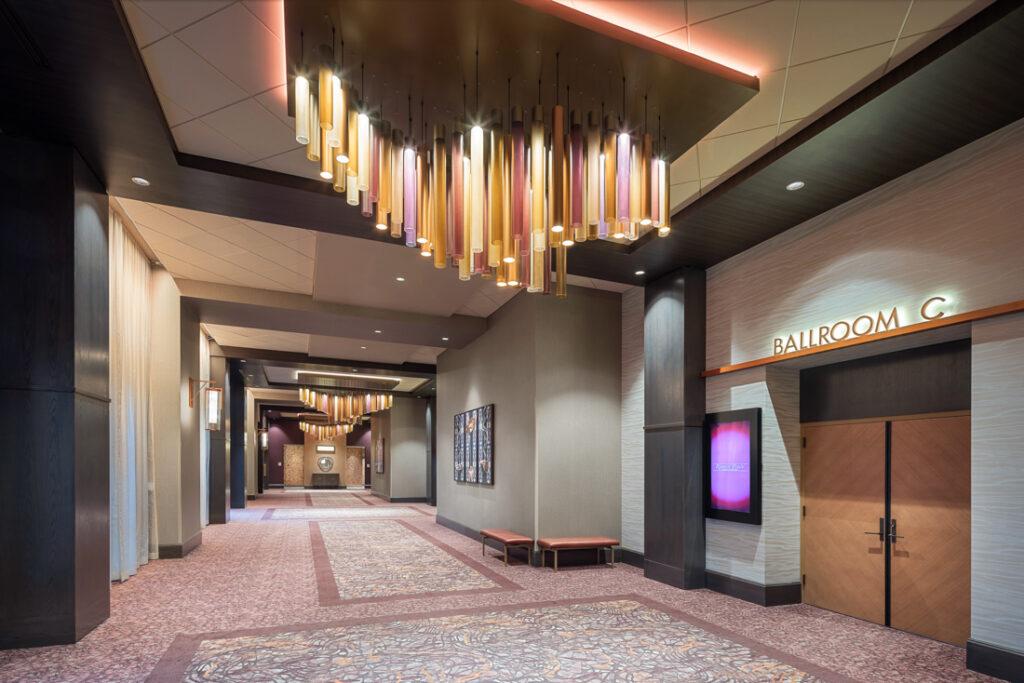 Designers skillfully blended culturally significant motifs and design elements, such as copper, red cedar wood, birchwood and natural stacked stone to bring guests and visitors closer to the Pokagon Tribe’s heritage and native lands. The event center aesthetic mimics a sunset’s reflection on rippling water, with warm amber, gold, and deep violet hues in lighting fixtures, furnishings, and in the abstracted river pattern of the custom carpet. Stylish wood detailing, neutral accents, and copper accent trim on walls and columns add just the right finishing touches to enhance the venue’s exclusive aesthetic.
Designers skillfully blended culturally significant motifs and design elements, such as copper, red cedar wood, birchwood and natural stacked stone to bring guests and visitors closer to the Pokagon Tribe’s heritage and native lands. The event center aesthetic mimics a sunset’s reflection on rippling water, with warm amber, gold, and deep violet hues in lighting fixtures, furnishings, and in the abstracted river pattern of the custom carpet. Stylish wood detailing, neutral accents, and copper accent trim on walls and columns add just the right finishing touches to enhance the venue’s exclusive aesthetic.
The 24,000-square-foot multi-purpose events center features a 10,000-square-foot ballroom with seating for 800, a banquet kitchen and 16 flexible meeting rooms. Expansive windows along the event promenade filter abundant natural light to pre-function spaces with two bars, a lounge seating group, a business center, and an outdoor terrace.
The entire third-floor level is dedicated to elegant VIP and hospitality suites with more intimate venues to host catered parties and VIP receptions. Each suite exudes comfort and approachable luxury, with access to outdoor terraces, some with dedicated whirlpools.
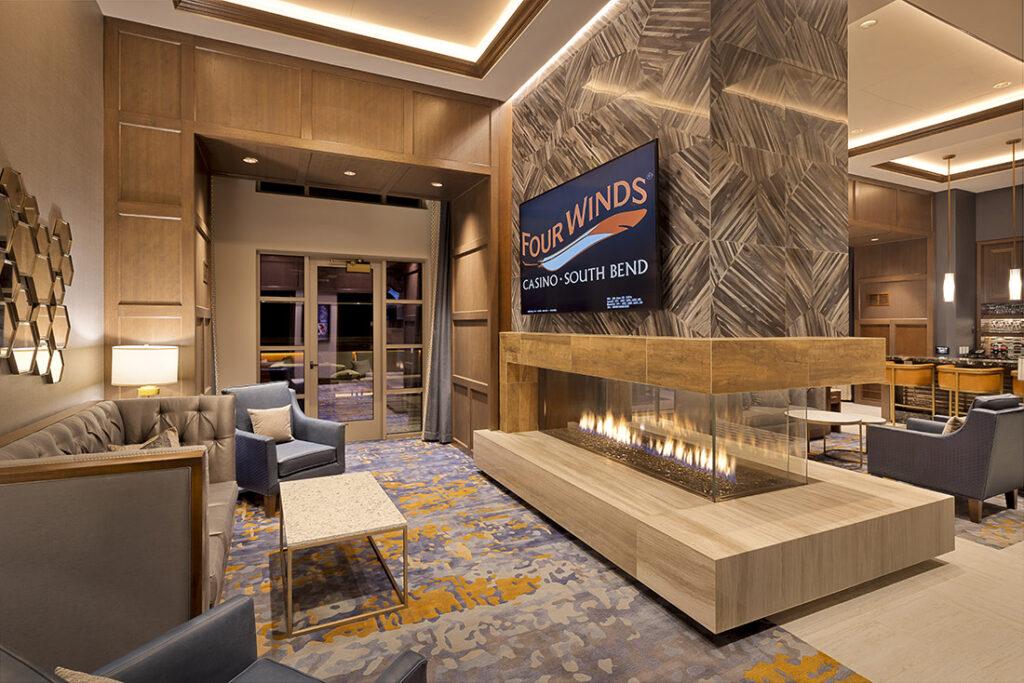 The suites are distinguished in either lighter feminine or darker masculine contemporary design aesthetics and equipped with serving bars, dining room nooks and a Quartzite-wrapped fireplace. Lavish living rooms and bedrooms are accented by furnishings upholstered in velvet and genuine leather, 100 percent wool inset carpeting, coffered and coved ceilings, classic wood paneling and natural stone and wood detailing.
The suites are distinguished in either lighter feminine or darker masculine contemporary design aesthetics and equipped with serving bars, dining room nooks and a Quartzite-wrapped fireplace. Lavish living rooms and bedrooms are accented by furnishings upholstered in velvet and genuine leather, 100 percent wool inset carpeting, coffered and coved ceilings, classic wood paneling and natural stone and wood detailing.
The expansion represents Four Winds’ second phase of growth in South Bend. The design team worked closely with the tribe to help ensure the design flowed cohesively with the Phase 1 casino. A beautiful blend of contemporary architecture and cultural heritage, upscale design and broad mix of entertainment options will offer guests and visitors an exceptional event experience, raising the bar in the region’s conference and meetings industry.
OWNER: Pokagon Tribe
ARCHITECTURE AND DESIGN: HBG Design
HBG Thought Leaders Weigh In: Food and Beverage for Casinos
Food Fight
Which is the best addition to your casino—an original food-and-beverage offering, or a branded restaurant with a built-in following?
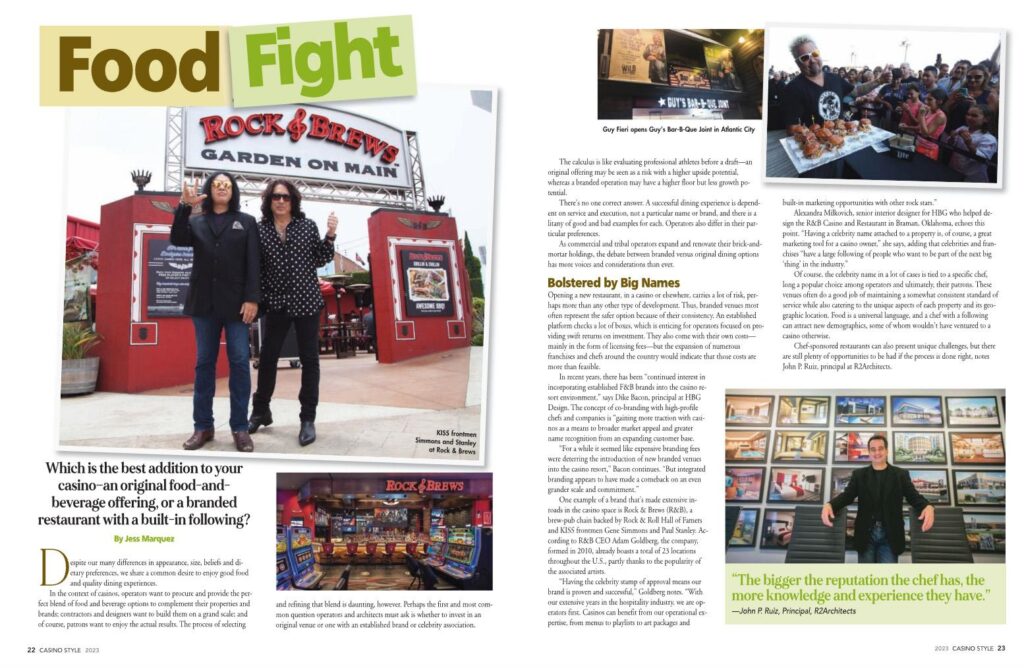 Despite our many differences in appearance, size, beliefs and dietary preferences, we share a common desire to enjoy good food and quality dining experiences.
Despite our many differences in appearance, size, beliefs and dietary preferences, we share a common desire to enjoy good food and quality dining experiences.
In the context of casinos, operators want to procure and provide the perfect blend of food and beverage options to complement their properties and brands; contractors and designers want to build them on a grand scale; and of course, patrons want to enjoy the actual results. The process of selecting and refining that blend is daunting, however. Perhaps the first and most common question operators and architects must ask is whether to invest in an original venue or one with an established brand or celebrity association.
The calculus is like evaluating professional athletes before a draft—an original offering may be seen as a risk with a higher upside potential, whereas a branded operation may have a higher floor but less growth potential.
There’s no one correct answer. A successful dining experience is dependent on service and execution, not a particular name or brand, and there is a litany of good and bad examples for each. Operators also differ in their particular preferences.
As commercial and tribal operators expand and renovate their brick-and-mortar holdings, the debate between branded versus original dining options has more voices and considerations than ever.
Bolstered by Big Names
Opening a new restaurant, in a casino or elsewhere, carries a lot of risk, perhaps more than any other type of development. Thus, branded venues most often represent the safer option because of their consistency. An established platform checks a lot of boxes, which is enticing for operators focused on providing swift returns on investment. They also come with their own costs—mainly in the form of licensing fees—but the expansion of numerous franchises and chefs around the country would indicate that those costs are more than feasible.
"In recent years, there has been continued interest in incorporating established F&B brands into the casino resort environment,” says Dike Bacon, principal at HBG Design. The concept of co-branding with high-profile chefs and companies is “gaining more traction with casinos as a means to broader market appeal and greater name recognition from an expanding customer base.
“For a while it seemed like expensive branding fees were deterring the introduction of new branded venues into the casino resort,” Bacon continues. “But integrated branding appears to have made a comeback on an even grander scale and commitment.”
One example of a brand that’s made extensive inroads in the casino space is Rock & Brews (R&B), a brew-pub chain backed by Rock & Roll Hall of Famers and KISS frontmen Gene Simmons and Paul Stanley. According to R&B CEO Adam Goldberg, the company, formed in 2010, already boasts a total of 23 locations throughout the U.S., partly thanks to the popularity of the associated artists.
“Having the celebrity stamp of approval means our brand is proven and successful,” Goldberg notes. “With our extensive years in the hospitality industry, we are operators first. Casinos can benefit from our operational expertise, from menus to playlists to art packages and built-in marketing opportunities with other rock stars.”
Alexandra Milkovich, senior interior designer for HBG who helped design the R&B Casino and Restaurant in Braman, Oklahoma, echoes this point. “Having a celebrity name attached to a property is, of course, a great marketing tool for a casino owner,” she says, adding that celebrities and franchises “have a large following of people who want to be part of the next big ‘thing’ in the industry.”
Location, Location
Of all the factors that influence the F&B decision-making process, two are perhaps most important: the location of the venue within the casino and the size of the casino itself. Often, these details will help the process shake out—or, as R2A’s Ruiz puts it, “you can start to peel the layers off the onion.”
“It really varies,” he says. “And what I mean by that is the size of the property—does it have three to five outlets, or does the property have 15 to 20 or 25 or more food-and-beverage outlets? How large is the property? That’s where these things start.”
Renovations and expansions of existing spaces are more common than brand-new builds, which means that casinos often have a predetermined space in which to fit a venue, and there are do’s and don’ts that correspond to that scenario.
As Cuningham’s Houck says, “One of the bigger questions is, what do you want to fill if it’s a large casino? It’s kind of like 101—you don’t put a Mexican place next to another Mexican place. So there is a sense of looking at what’s needed.”
Additionally, changes in patron preferences can make certain concepts outdated, and renovating can allow operators to “remain responsive to changing market conditions and new branding opportunities and to refresh a property’s offerings,” says HBG’s Milkovich.
Casinos big and small are like mini-ecosystems, constantly trying to find the best flow, the best integration of amenities and gaming. As such, companies will vary in their brands and tastes (no pun intended), and architects and designers will work to keep pace with those changes.
“Different clients and different properties have different techniques or theories behind it,” SOSH’s Sochocky explains. “Some clients we work with actually like their top restaurant all the way at the back of a casino, so they can draw people through the casino floor to get to it. Some of our clients like it at the front door… Their gaming floor also has a lot to do with it. It does become a little bit of a game of real estate.”
Regardless of the type of venue, it’s clear that the true beneficiaries are the patrons, the ones who get to fully enjoy the experiences that operators, designers and architects work so hard to create. A truly successful venue is one that can satisfy its target audience, again and again and again.
Unveiling the Cultural Richness of the new Eagle Mountain Casino
AN ENTERTAINMENT ESCAPE:
The new Eagle Mountain Casino connects People to Place.
HBG Design, the architecture and interior design firm behind Eagle Mountain Casino’s new development in Porterville, California, has unveiled a project that offers a fresh interpretation of the culture and heritage of the Tule River Tribe.
Welcome to Eagle Mountain Casino, where Tule River Tribe's culture and heritage are beautifully integrated.
HBG's design concept pays tribute to the tribe, capturing their customs and traditions throughout the casino. Inspired by the scenic Tulare County and Central California, the design reflects a meticulous crafting of boldness, captivating details, and engaging elements.
A variety of tribal basket patterning and motifs highlight ceiling and floor planes and light fixtures, drawing guests through wayfinding paths, to the 1750 machine casino, the Ember Center Bar, The River Steakhouse, The Acorn Diner, The Cedar Food Court, Yokuts Coffee House, and the Redwood Taphouse, and a new 2,000-seat event center. HBG designers merged concepts and elements to create an enticing design environment and approachable luxury for customers.
Click to Read More About the Project
Vertical features symbolize the grandeur of the Giant Sequoia and the majesty of the Golden Eagle, both culturally significant to the tribe. Flowing forms and organic curves echo the Tule River's path, immersing guests in a dynamic environment that harmonizes with nature.
The continuous theme of The Flight of the Butterfly and Quail Tufts unifies the design, flowing from the entry to the gaming area and center bar. The new Eagle Mountain Casino weaves together a vibrant tapestry of cultural elements, taking guests on a visual journey into the heart and spirit of Tule River Tribal heritage.
Hyatt Centric Beale Street Hosts the 2023 AIA Tennessee Conference
HBG Design's Mark Weaver, FAIA, was recently interviewed about our firm's design of the 2023 American Institute of Architects (AIA) Tennessee Chapter Conference Host Hotel, the Hyatt Centric Beale Street Memphis.
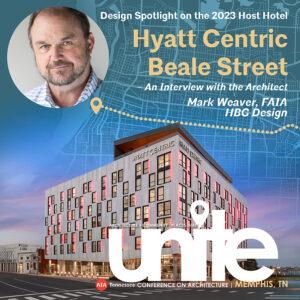
Not within the recent history of the AIA Tennessee conferences has the host hotel and conference space been a recently built building designed by a firm based in that city that knows the ins and outs of the local culture. To continue our feature on the 2023 host hotel, we have a special interview with the architect and principal designer Mark Weaver of Memphis based HBG Design to talk more about how much the local culture inspired the design.
What design features are you most excited for your peer architects to see and enjoy?
I am extremely proud of what our talented HBG team accomplished in creating the Hyatt Centric and Caption by Hyatt hotel designs. And I’m even more excited for the opportunity to share these remarkable spaces with the esteemed members of the AIA Tennessee community. For me, these hotels are a showcase of meaningful contemporary architecture and placemaking that honors Memphis’ iconic music history and its heritage of riverfront industry.
The Centric and Caption represent a convergence of this legacy – being the first hotels built on Beale Street on the historic site of the William C. Ellis and Sons Ironworks and Machine Shop, just one block from the Mississippi River. Our team took great care to preserve the Ellis building structures and their historic character to create distinctive must-visit experiences for hotel and conference guests. Visitors will enjoy the charming street-front beer garden and the Talk Shop all-day hangout and lounge at the Caption hotel. We also modernized other Ellis structures for the Centric and Caption’s shared conference and meeting space.
The serpentine-shaped glass wall at the Centric hotel lobby and CIMAS restaurant is a window to the lively atmosphere of downtown Memphis, between Beale Street’s main entertainment district and the riverfront. But my personal favorite spot is the Centric rooftop whiskey bar and lounge deck, called Beck and Call. In my opinion, the venue offers downtown’s best views of the Mississippi River, the “M Bridge” light show and the city skyline. It’s the perfect place to entertain visitors or unwind after a long day.
Click Here to Read More of the Interview at AIATN.org
Four Winds South Bend Elevates its Competitive Edge
SOARING ABOVE THE COMPETITION:
Four Winds South Bend Casino Elevates its Competitive Edge
With New HBG-Designed 23-Story Resort Hotel, Spa, and Event Amenities
HBG Design's longstanding design collaboration with the Pokagon Band of Potawatomi Indians has resulted in a one-of-a-kind resort experience that combines contemporary luxury and highly desired modern hotel, spa, conference/events and gaming amenities within a celebration of heritage that flows through every corner of the resort.
There’s a new landmark on the South Bend, Indiana skyline, and it’s an awe-inspiring sight - a towering 23-story glass hotel that glows at sunset with a beautiful copper hue. But this impressive structure is more than a marvel of contemporary architecture; it's a testament to the Pokagon Tribe's rich heritage and commitment to providing guests with an unforgettable destination experience.
From the moment visitors enter the new 317-key, 82-suite hotel, the 10,000 SF Cedar Spa, the 24,000 SF conference and events expansion at Four Winds South Bend, they are greeted with a seamlessly exquisite display of sophisticated design that flows through every space in a celebration of culture and the natural elements of native lands.
The impact of the new expansion at Four Winds Casino Resort in South Bend, Indiana has been nothing short of profound, as a stunning resort experience for guests seeking respite, a flourishing economic driver for gaming and events, and a remarkable legacy for the Pokagon tribal community.
Click to Read More About the Project
HBG Designers Select Their Pick of the Trends
HBG Design is on the forefront of the latest ideas in 2023 hospitality and entertainment design. Read our lead designers’ pick of the trends for the year ahead.
HBG ‘Design Thinking’ Contributors:
- Emily Marshall, IIDA, NCIDQ, Principal / Interior Design Director
- Alexandra Milkovich, IIDA, NCIDQ, Associate / Lead Interior Designer
- Landon Shockey, IIDA, NCIDQ, Lead Interior Designer
- Thor Harland. Lead Architectural Designer
Focusing Capital Budgets on Distinctive Amenities and Unexpected Experiences to Attract a Wider Market
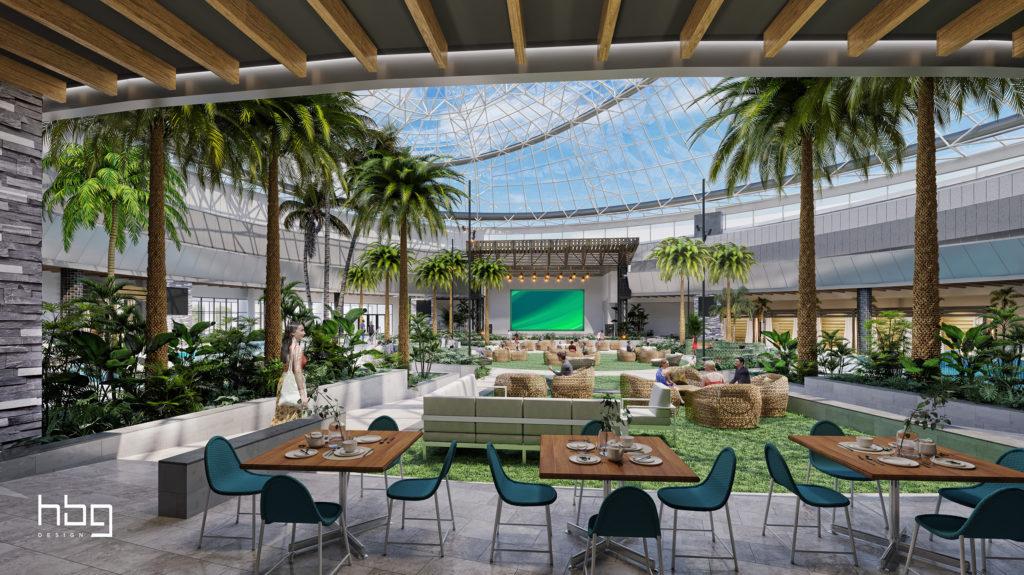
Competition in most markets will continue to be intense in 2023. Properties large and small across the U.S. are elevating competitive advantage by renovating and expanding new market-driven, revenue-generating amenities. Many of our resort clients are betting BIG on unique features to bring in a new untapped customer base from greater distances. “For Gun Lake Casino Resort in Wayland, Michigan, that ‘wow’ factor is a large multi-purpose pool and events complex. The new six-story, 32,000 SF architectural marvel is set to be an oasis for ‘superregional’ customers in Chicago and Detroit looking to escape those harsh Midwest winters,” says Thor Harland. “With a year-round temperature of 82 degrees, The complex is a never-before-seen expansive, mixed-use environment, completely climate-controlled under a stunning glass roof. At its heart are terraced, landscaped pools that transform into a one-of-a-kind event center within the atrium environment. A resort pool by day and a performance complex by night, the concept includes three distinct pools, a swim-up bar, live palm trees and tropical flora, and a large entertainment stage that can host events for up to 2,400 people.”
“We always work closely with our clients and their operations teams to keep project costs down,” says Emily Marshall, IIDA, NCIDQ. “By identifying and eliminating superfluous or unnecessary square footage, we help Owners focus their design budgets on those eye popping, revenue-generating amenities that create visual and experiential distinction in their markets.”
Multi-Functional Hotel Lobbies and Centralized F&B
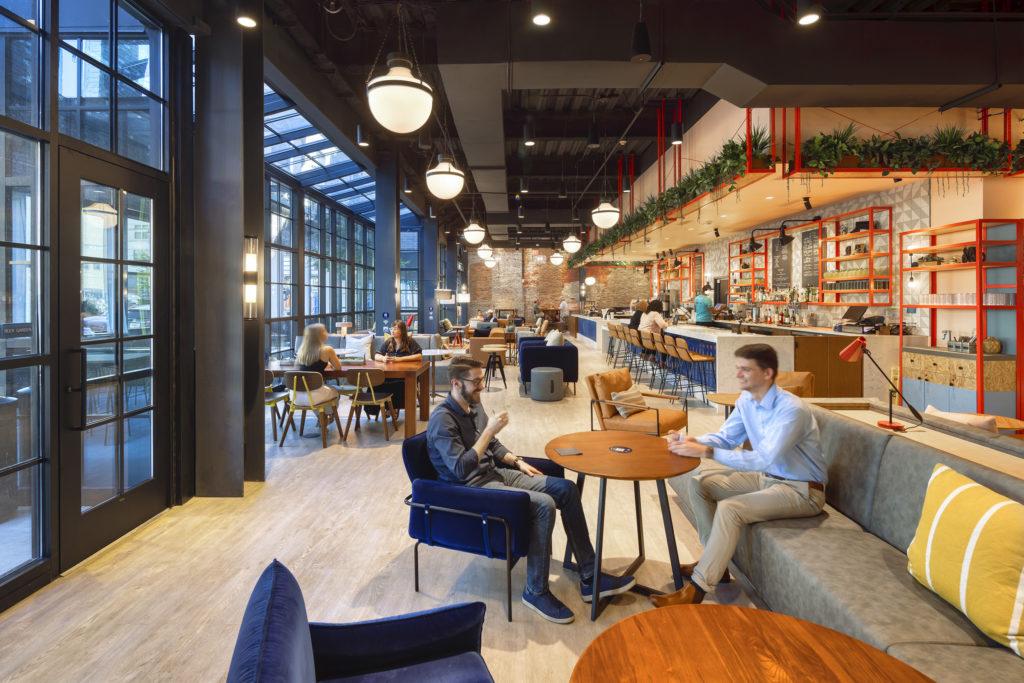
Gone are the days of guests zipping through the lobby as a passageway to other destinations. The new hotel lobby beckons you to sit and stay a while. “Furthering the residential trend that has taken off in the hospitality space, lobbies are appearing more like a comfortable living room – offering a place to eat, drink, work, and play,” says Marshall. The new lobby lounge coined ‘Talk Shop' at Caption by Hyatt Beale Street Memphis reimagines the guest arrival experience with a lively multi-functional welcome area, all-day lounge and workspace, coffee shop, eatery, grab-and-go artisanal market and cocktail bar. “Energy reverberates throughout the colorful space, which was designed to encourage social interaction inside and outside at the adjoining beer garden courtyard,” she adds. Similarly, the adjacent Hyatt Centric Beale Street Hotel’s lobby offers a variety of amenities to suit visitors, locals and remote workers alike, including a large lobby bar and lounge, a communal worktable with integrated outlets and charging stations, a convenient grab and go market, and high-profile dining venue.
“We are also leading changes in F&B design that improves operational efficiency, as a direct outgrowth of the industry’s ongoing staffing shortages,” says Marshall. She explains that menus and food selections may be branded around an experience, but online ordering and room service / delivery / locational pickup means that food preparation no longer needs to be in separate kitchens attached to individual venues.
“Another good example is a property like Resorts World in Las Vegas where food and beverage operations are streamlined by creating centralized, shared hub and spoke type kitchens that service all dining venues on property.” There are many diverse solutions; it all comes down to creating efficiency and functionality that produces high quality with reduced resources.”
Dark, Dramatic, Statement-Making Design
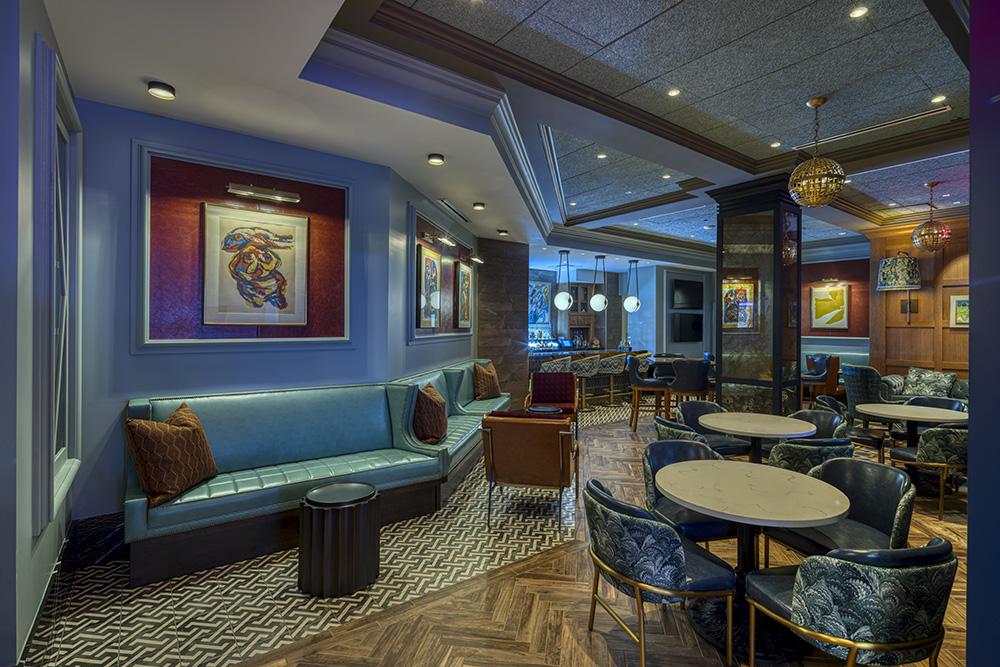
“We are taking bright colors like coral, violet or turquoise and deepening their tonality to create more subdued, rich, darker shades that are visually interesting and restorative,” says Landon Shockey, IIDA, NCIDQ.
The simplicity of white interiors and a minimalist palette is always in style, yet as casino resort designers we LOVE that deep, moody colors are back. One example: The Oak Room at Oaklawn Racing Casino Resort in Hot Springs, Arkansas–a perfect blending of contemporary and traditional design–features an early 1900s era aesthetic reminiscent of a dimly lit, moody speakeasy. The noted F&B venue mixes deep, luxe tones and geometric patterns with brilliantly colored, stunningly energetic LeRoy Neiman original paintings as a playful contrast in the eclectic eatery. Globe pendants, tufted leather banquettes, and custom oak detailing finish the look while transporting guests to a different era.
“Complementing inky hues, we’re blending rich textures like leather, velvet, natural stones, and a variety of woodwork that adds depth and softness which is irresistibly cozy and welcoming,” adds Alexandra Milkovich, IIDA, NCIDQ.
Continued Alignment of Sustainability and Design
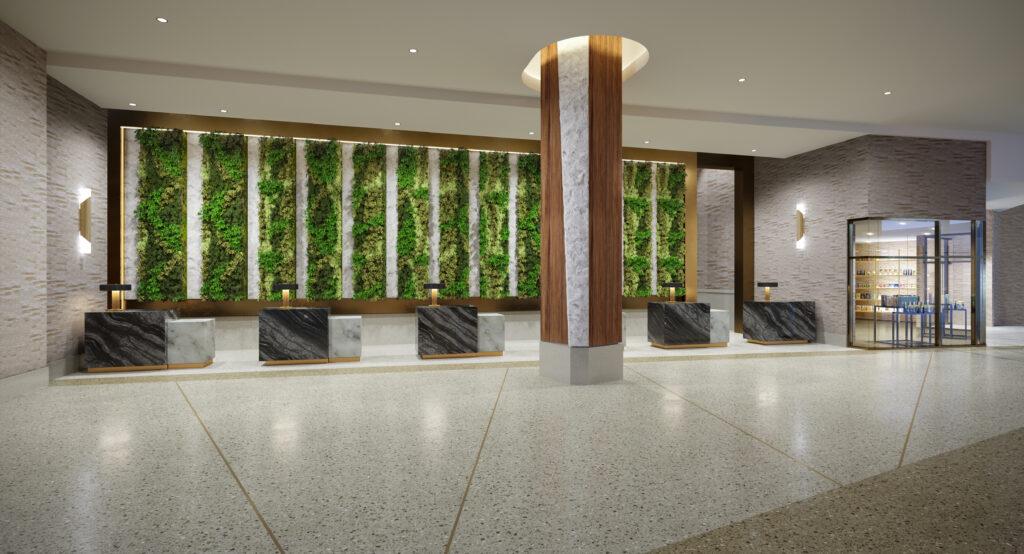
Sustainability is taking center stage these days and major hospitality brands like Hilton, Hyatt, Starwood and Marriott are committing to significantly reducing their environmental footprint in the coming years and focusing on wellness as a key benefit for guests.
“HBG Design is actively aligning our design concepts and interior selections to help clients down this path,” says Milkovich. “Our teams have prioritized sustainable materials in our interiors library and are training designers to select materials for their durability and ease of maintenance and to extend the duration between property refreshes/renovations.”
"Durability leads to a longer lifecycle, especially for furnishings; and the lifetime of a product is something that is extremely important to not only the environment, but also to our client’s bottom line,” adds Milkovich. “For instance, instead of using an exotic wood species such as Mahogany or Walnut that may be overharvested, we would specify Eucalyptus, which is a more renewable species and sustainably sourced. Today’s products made from Eucalyptus can often mimic the appearance of a rarer wood.”
Design That Supports Guest Wellness and Well-Being
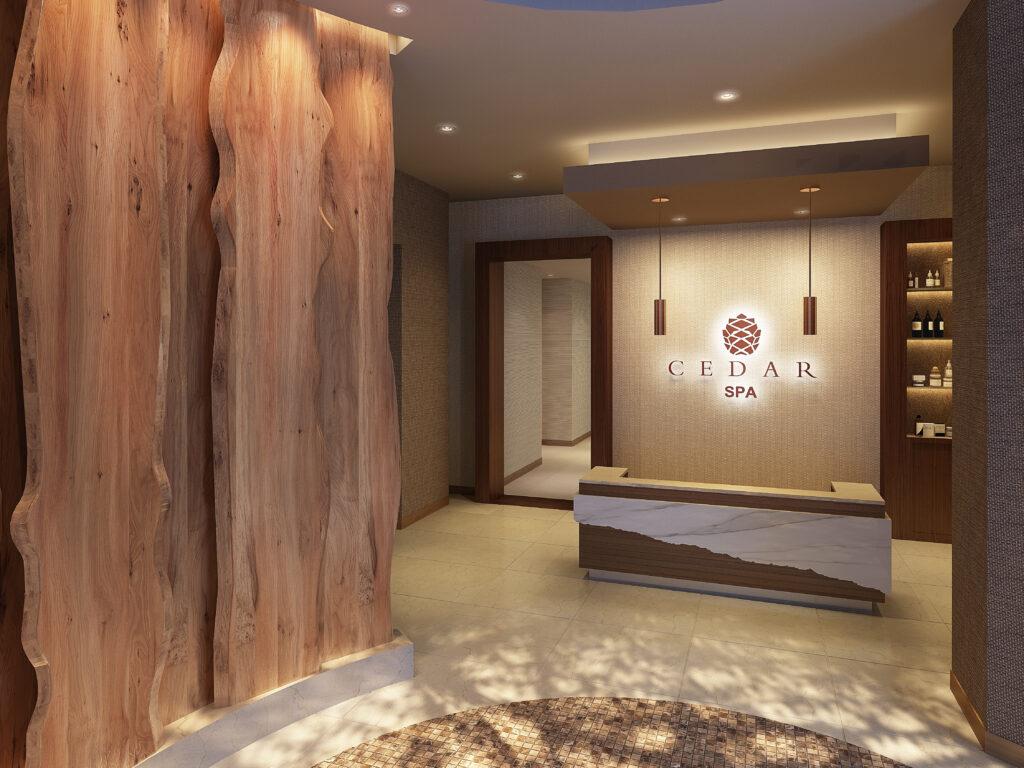
Many of our clients are excited to promote wellness, mindfulness and health benefits among their guests, making spas within the resort environment even more popular today.
“Reduction of stress and increased well-being and healing are some of the overall benefits of biophilic design through the infusion of natural and nature-inspired materials into the built environment,” says Marshall.
The new Cedar Spa at Four Winds Casino Resort in South Bend, Indiana, is a great example of how the demand for wellness is being incorporated into gaming resort properties. At Four Winds, the resort’s signature design elements of copper, cedar, birchwood and stone--each representing significant cultural elements of the Owner’s heritage--are integrated throughout the spa, holistically adding to the wellness experience. Located on the first level of the new 23-story, 317-room hotel tower, The Cedar Spa provides a variety of traditional and unique spa therapies, including steam rooms, saunas, vitality pools and separate lounges for women and men.
“The transition from the high energy zone of the gaming floor to the relaxation zone of the spa is highlighted by an illuminated feature that appears as sunlight shining through a canopy of cedar trees,” adds Marshall. “This simulation was created through ornate copper ceiling elements allowing pockets of light to peek through, creating dancing shadows around the spa entry.”
HBG Debuts the Caption by Hyatt Brand
Introducing Caption by Hyatt Beale Street Memphis:
The First Caption Branded Hotel Built in the World!
Not just in the community, but of the community.
That is Caption by Hyatt’s design promise. The first ever built Caption by Hyatt branded hotel--designed by HBG Design and built in Memphis, Tennessee--fully delivers. The upscale, select-service lifestyle brand introduces a dynamic hospitality experience with an unmistakable neighborhood feel.
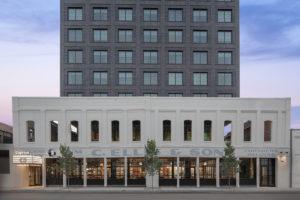
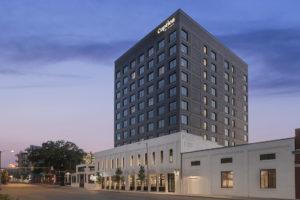
The hotel is housed distinctively within the two-story historic façade of the William C. Ellis & Sons Ironworks and Machine Shop building in downtown Memphis. With its original stenciled building signage intact, the historic Ellis Building was repurposed for the Caption's unique storefront beer garden and first two levels. It also creates the event, conference and meeting space shared by the Caption and the adjacent Hyatt Centric, Built in 1878, this former blacksmith shop was one of the earliest, longest-running businesses in Memphis. It made wrought-iron straps for carriages and shoes for horses and mules and was later used as an agricultural machinery repair shop.
A new 136-room hotel tower rises above, offering guests endless views of the Memphis skyline and the Mississippi River.
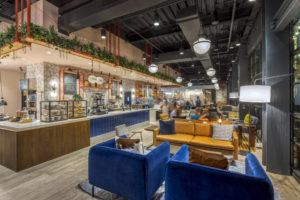
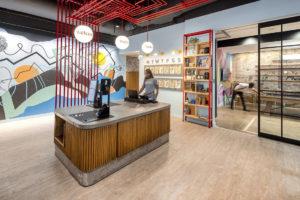
The heart of Caption by Hyatt Beale Street Memphis is ‘Talk Shop’, the brand’s reimagined arrival experience. Here, guests enjoy a lively multi-functional welcome area, all-day lounge and workspace. It features a coffee shop, eatery, grab-and-go artisanal market and cocktail bar. Energy reverberates throughout the colorful space, which was designed to encourage social interaction. It is a place to eat, drink, and connect – inside, and outside at the adjoining beer garden courtyard.
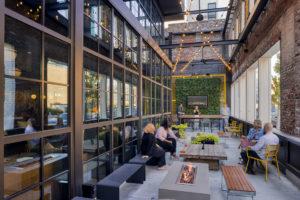
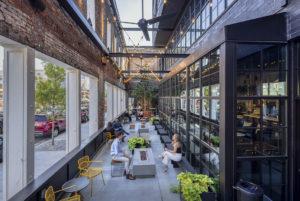
The beer garden is an expansive patio is open to the street’s pedestrian walkway. The space is uniquely integrated within the building’s historic façade and allows guests to fully engage with the active downtown neighborhood.
Click to Read More About the Project
HBG planners and designers created a strong sense of place and a distinct ‘localvore’ urban experience for the Caption by Hyatt and the adjacent Hyatt Centric by drawing conceptual inspiration from Memphis’ rich riverfront industrial history found in the Ellis machine shop buildings, the city’s world-famous musical roots, and the city’s distinct ‘grit and grind’ attitude.
HBG Design Welcomes a New Generation of Leaders
Earlier this year HBG announced the promotion of Nathan Peak, AIA, to Practice Leader. Today, HBG is excited to announce additional promotions and elevations of staff that emphasize the depth and breadth of talent across the span of our entire firm. We welcome these next generation of leaders whose voices are already making an impact on how we operate and practice industry-leading design.
Congratulations to the following HBG Design employees on their recent firm promotions and advancements!
- Deidre Brady, AIA, NCIDQ, LEED AP BD+C, Promoted to Principal / Project Management Leader
- Chris Devine, AIA, Promoted to Senior Associate / Documentation & Specification Leader
- Leslie Thompson, Promoted to Senior Associate / Process Improvement & Resource Leader
- Jason Fox, Promoted to Senior Associate / Construction Administration Leader
- Michael Ochoa, AIA, Project Manager, Promoted to Senior Associate
- Chase Percer, AIA, Associate, Promoted to Design Technology Leader
- Christopher Wood, IIDA, NCIDQ, Interior Designer, Promoted to Associate
- Tamara Goff, CPSM, Principal, Transitioned Role to Director of Communications & Brand Experience
- Dana Ramsey, CPSM, Associate, Promoted to Director of Marketing
- Paul Towery, AIA, ICCC, Senior Associate, Promoted to Codes & Compliance Leader
- Morgan Streitmatter, Promoted to Human Resources Manager
- Patty Sprecco, Promoted to Human Resources Coordinator
- Leah Goodwin, Promoted to Practice Operations Facilitator
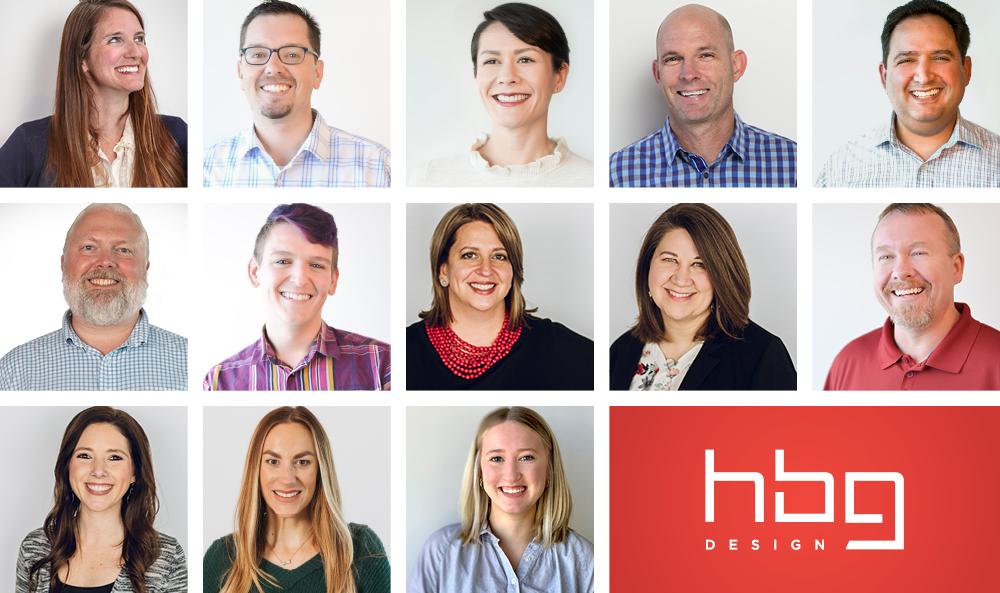
Urban Hotel Design: Embracing the Complication
by Thor Harland, Senior Architectural Designer, HBG Design
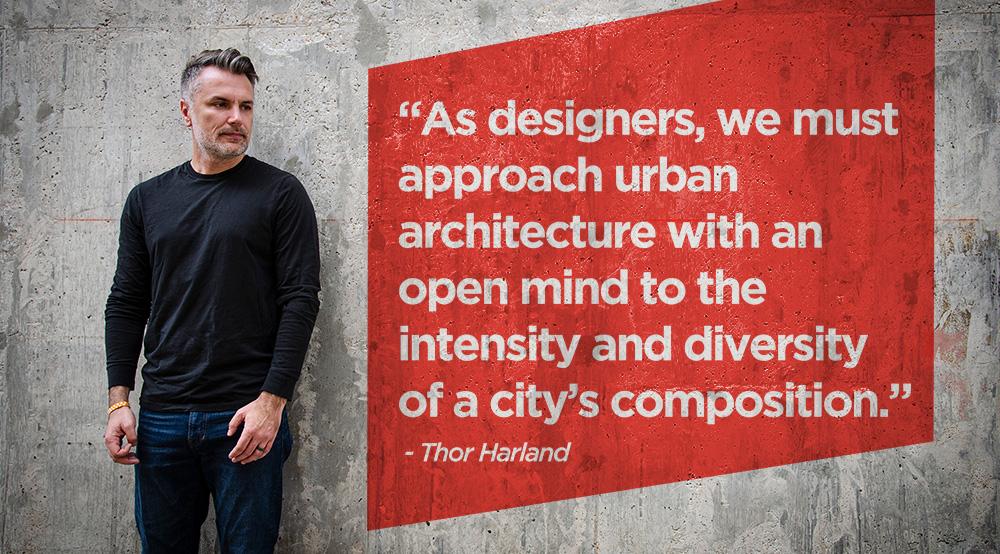
For me, the excitement of urban architecture originates from its inherent complications. It is the limitations and layers of thought that we as designers must critically analyze before introducing new concepts into an already dense city environment.
In most urban settings, available sites for new construction are tightly positioned between existing structures. Each building serves a different user function yet remains connected to the whole. Aesthetics and materiality often vary significantly from building to building, irregular and sometimes raw depending on the age. Some sites retain elements of structures long unused.
New project designs created within the urban framework should be informed by these and other constraints. Historical precedents and environmental context supply ample opportunity to evolve the city’s character.
Our design teams approach these projects with an open mind to the intensity and diversity of a city’s composition. The solutions to these challenges inform the shape, materiality, and function of all new building designs. After all, the more problems a building solves the more value it brings to its surroundings.
In downtown Memphis, Tennessee, three recent hotels designed by HBG Design serve as diverse examples of how a new, evolved design character can reinvigorate the urban landscape bringing immense value to the city collective.
The Canopy by Hilton Downtown Memphis, the Hyatt Centric, and the Caption by Hyatt Beale Street Memphis hotels all represent projects that required thoughtful and rigorous design study to reach their ultimate solutions. Lying vacant for 12 years, the site of a former 50’s era hotel, and a riverside lot with an adjacent 19th century machine shop were each initially viewed as being of limited interest to prospective tenants; some even considered them to be urban blight. Through a new lens, the Canopy, Centric and Caption hotels unveiled opportunities for designers to bring out each building’s individual characteristics and iconic identifiers, ultimately creating enormous community impact.
Canopy by Hilton Downtown Memphis Hotel – Renewing a Gateway Site into Downtown Memphis
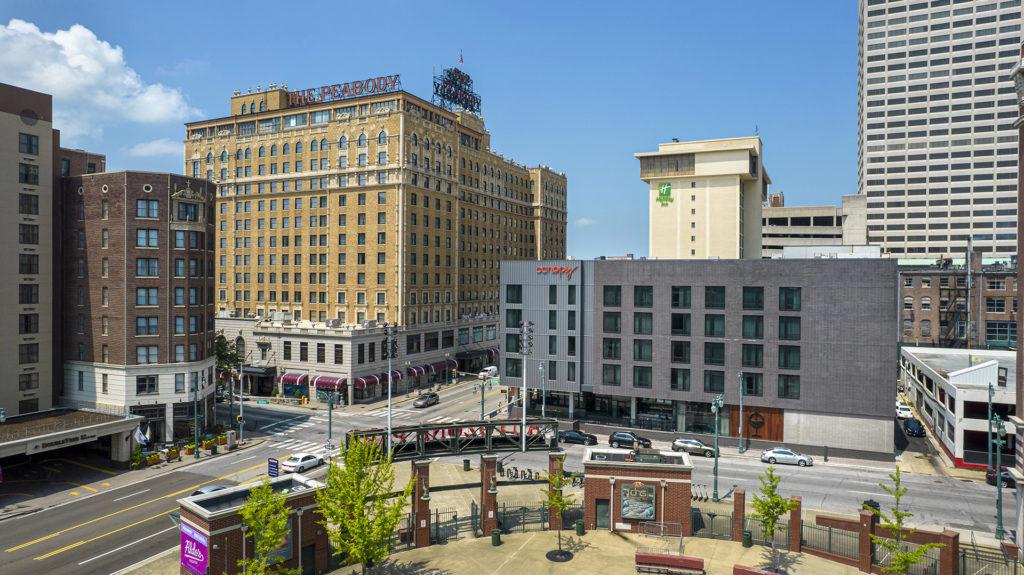
Located at an important gateway into downtown Memphis’ urban center and its historic, world-famous attractions, the Canopy hotel replaced the dilapidated Benchmark Hotel, that was still occupying the site. This corner of Union Ave. and BB King Blvd. is the iconic location of the Peabody Hotel and AutoZone Park, only a few shorts blocks from Beale Street.
The Canopy design and construction was extremely complex to navigate, given the owner’s desire to keep existing building structures and foundations from its previous hotel incarnations. The conflicting structural challenges were ultimately transformed into useful square footage and its solution informed a simplified hotel geometry and a comprehensive expression that created a unique dichotomy between upper and lower floor masses.
The project consists of a 171,100 square foot hotel block elevated above a visually transparent podium level and one level of subterranean parking. The hotel block maximizes the site’s guestroom potential through a double-loaded guestroom corridor ring surrounding an internal light well. A sense of transparency and natural daylighting in the hotel’s base level is achieved through floor to ceiling storefront systems along the South and East edges and two large skylights located under the light well that amplify the restaurant, lounge, and bar amenities.
A Discerningly Rebellious Urban Design, of its Time and Place
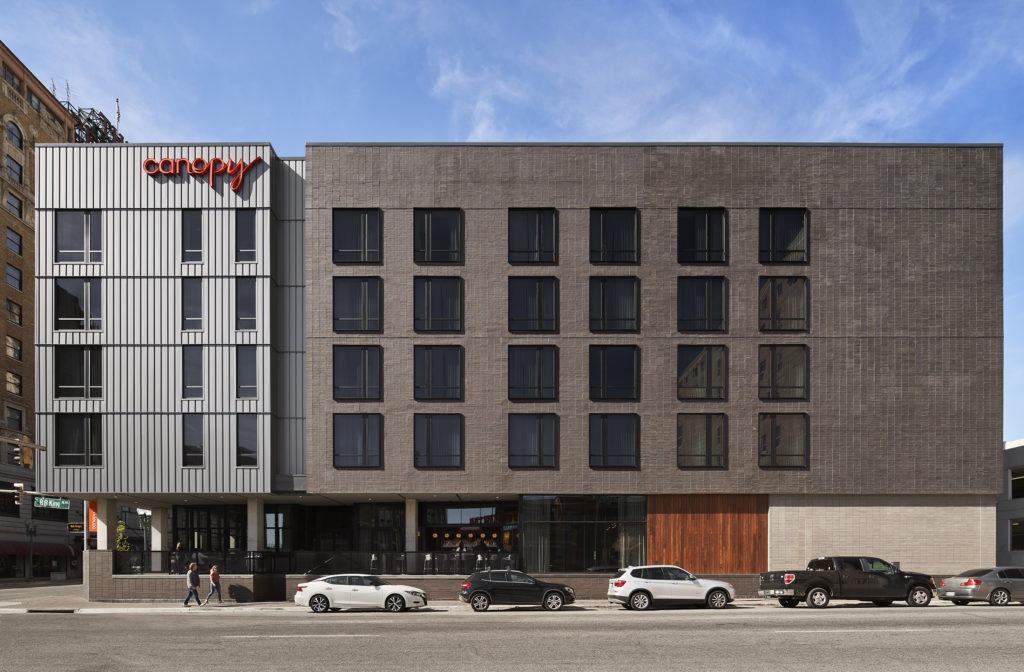
To me, great architecture evokes unexpected beauty and resistance but is based in unarguable logic. Through our project visioning, brand interpretation and concepts, the Canopy architecture became less about individual expression and more about amplifying the neighborhood experience in Memphis as the city is today.
The Canopy hotel structure is meant to be a building of its time, and an evolution of Memphis’ downtown personality. We considered the historical precedents and the progressive concept of the Canopy brand; and we used these themes as idea generators for our explorations. The result is a concept that is respectful to place, but also a representation of its contemporary generation.
Downtown Memphis architecture has a long industrial history with rows of ornate brick hotel, office and former warehouse buildings lining the urban streets. The materials, proportion, scale and well composed fenestrations of the Canopy are meant to evoke the characteristics of the existing network of mid-rise masonry architecture in the downtown area.
Brick was an important material for continuity, but the size of the brick is slightly different at the Canopy. We used a larger scale brick, and the patterning isn’t a typical running bond; it’s a stacked bond pattern. So, there is some deviation there that helps give the building its own identity. It’s the slight, subtle differences like that and just the overall geometry of the heavy upper floor mass floating above the open public space below that helps to differentiate the design from its neighbors.
A dark charcoal gray palette and simplification of form contemporizes the visual aesthetic of the architecture. It’s discerningly rebellious. I love that an Avant Garde result can be created through rigorous historic, aesthetic, and structural investigation and a direct reaction to the project’s context and objectives.
In the Canopy design, we have produced a unique complement to neighboring buildings, and also a structural acknowledgement of Memphis’ continued evolution as a city with its own intricate personality.
See more Canopy Hotel photos here.
This is part one of two in Thor Harland’s series,
Urban Hotel Design: Embracing the Complication
In part two, Thor and other designers will discuss how Memphis’ One Beale Mixed-Use Development gave rise to a full historic city block of branded hospitality, including the Hyatt Centric, and the Caption by Hyatt Beale Street Memphis hotels.
Spotlight on HBG's Emerging Professionals Studio
A discussion with HBG Design’s Emerging Professional Studio (EPS) Leader and recently licensed architect, Ryan Callahan, AIA
Ryan, as the new leader of HBG’s Emerging Professionals Studio (EPS), can you give us some background on the program?
While my involvement in the Emerging Professionals Studio began five years ago, HBG Design’s EPS program was conceived about 15 years ago as a group led "by EPs for EPs", providing opportunities for leadership experience within the firm at an early career stage.
The EPS originally focused on helping emerging architecture professionals through the AXP architecture licensure process and also provided opportunities for team building. The program has evolved to serve expanded EP career needs, including welcoming HBG’s interior designers into NCIDQ licensure study while also focusing on individual leadership development.
As a practice that integrates architecture and interior design to create hospitality design experiences, it was imperative that the EP Studio evolve to support the way our firm works and collaborates. Architects and interior designers have different licensure requirements and different ways we approach a project based on the nature of our disciplines, but we share similar goals and many commonalities, which are incorporated in the EPS program.
Our EPS today is rooted in the idea that emerging professionals desire structure in working towards licensure, but also want the flexibility to easily modify the pace of their journey as their personal or professional life changes. Mentors play a key role in helping EPs find their path individually and as a group, actively developing support strategies and needed resources for licensure in ways that matter most to each individual in their particular stage of development.
How did you become a leader of EPS?
I had just passed my remaining Architectural Registration Exams (AREs) a few months before Nathan [Peak, HBG’s Practice Leader] asked me to lead the EPS group. I think he asked me specifically because I was newly licensed, but also because I was part of HBG’s pre-Covid EPS program culture. As our workplace returned to the office, we all wanted to find ways to reengage our EPs into a group-learning mindset and provide the kind of supportive group environment that we had before the pandemic, and had been missing for over two+ years. Covid was so disruptive to everything, to the way we do things, even to my own growth. I entered and came out of Covid in a different phase of life. A lot of things changed. For example, I was just newly married entering Covid. When we went into work-from-home mode during this weird, sort of hyperbolic isolation, I came back to the office as the father of two boys. Now, I’m more aware of the level of involvement that people in different stages of life can have after work hours, but I’m also more focused.
And, of course, I could not lead EPS without others. In our Memphis office, Chris Wood is co-leading on the interior design side. And in our San Diego office, architect Nathan Blair and interior designer Alexandra Milkovich are leading the local EPS activities.
How has the EPS changed since you started?
For the first two years of my involvement in EPS, we had about 20-30 EPS members. It seemed like our EPS culture revolved around in-person knowledge exchange forums, recreational sports, and group learning activities. Of course, the pandemic changed everything, and put a damper on group events. We are now recapturing that level of camaraderie and have a great EPS group and supportive firm culture. I am seeing our group involvement increase every month.
The “work-from-home era” did teach us how to become more technologically resourceful and interconnected across distances. With more variety of tools enabling us to work virtually, we were able to put study information at each EP’s fingertips. All HBG’s EPS study information was organized, cataloged by topic, and made accessible through our MS Teams cloud-sharing platform. I’m proud to say we didn’t let the pandemic become a huge obstacle to getting our EPs help. For me, the biggest hurdle was just getting started.
What’s new for the EPS at HBG Design?
Knocking out AXP experience hours quickly is everyone’s goal when they get out of school, because there are a lot of hours required! EPS continues to coordinate supplemental training, quarterly site visits/project tours, exam study sessions, and professional engagement with design industry organizations. And our project staffing tracks EPs who are actively pursuing licensure to connect them with needed AXP hours.
EPS leadership has also been developing onboarding courses to help new hires become fully engrained and fluent in HBG’s design processes. This is the information they didn’t and couldn’t learn in school.
This is a bit like HBG’s version of the NCARB AXP program re-formatted into a series of lessons from seasoned professionals at the firm who each offer over 20 years of industry experience. These seasoned professionals lead regular meetings to share topics on the firm’s building processes ranging from codes to life-safety; space planning to hospitality design to sustainability to construction detailing - all supporting knowledge sharing and the path to licensure through ARE, NCIDQ and LEED testing.
“Knowledge of how something is constructed is very valuable. It doesn’t matter if you are selecting a finish or drawing a wall or designing a building. If you know how it goes together, it goes together better,” says Ryan.
How are EPS participants given a voice?
Everyone in the EPS group is empowered to initiate a discussion, lead an event or portions of a group project, or given freedom to implement a new process they feel passionate about and that will lead to growth of their peers and colleagues.
Weekly ‘Coffee + Collaboration’ mornings offer an all-employee open platform to initiate design discussions based on active project reviews to help inform the general direction of design or seek input on how current projects could be improved. EPs and student interns work together as valued project team members, gaining exposure to design challenges as well as opportunities to exchange ideas. They get a lot of encouragement to add their input in project design critiques in an environment where every voice is respected. This adds to EP’s experience in acquiring increasing levels of hands-on design leadership and really finding their voice.
We also have a number of international AIA members and EPS gives them a road map to licensure in the U.S. after becoming licensed in another country. The EPS is really benefiting from the variety of viewpoints and experiences of our EPS members. They each bring different approaches and well-rounded perspectives to the group.
Is EPS all business?
Career fulfillment is heavily dependent on engagement with co-workers. Now that we are MOSTLY out from under the pandemic, I think it’s important for the EPS to continue promoting relationship building and providing bonding opportunities among co-workers and within the EPS. These group experiences build an authentic sense of camaraderie that builds trust and makes the work experience much more inspiring and positive.
From painting parties to kick-ball and indoor soccer teams; group nights and happy hours at new restaurants to family-centered outings, EPS is actively improving our post-Covid in-person firm culture and making the firm a stronger, more dynamic organization.

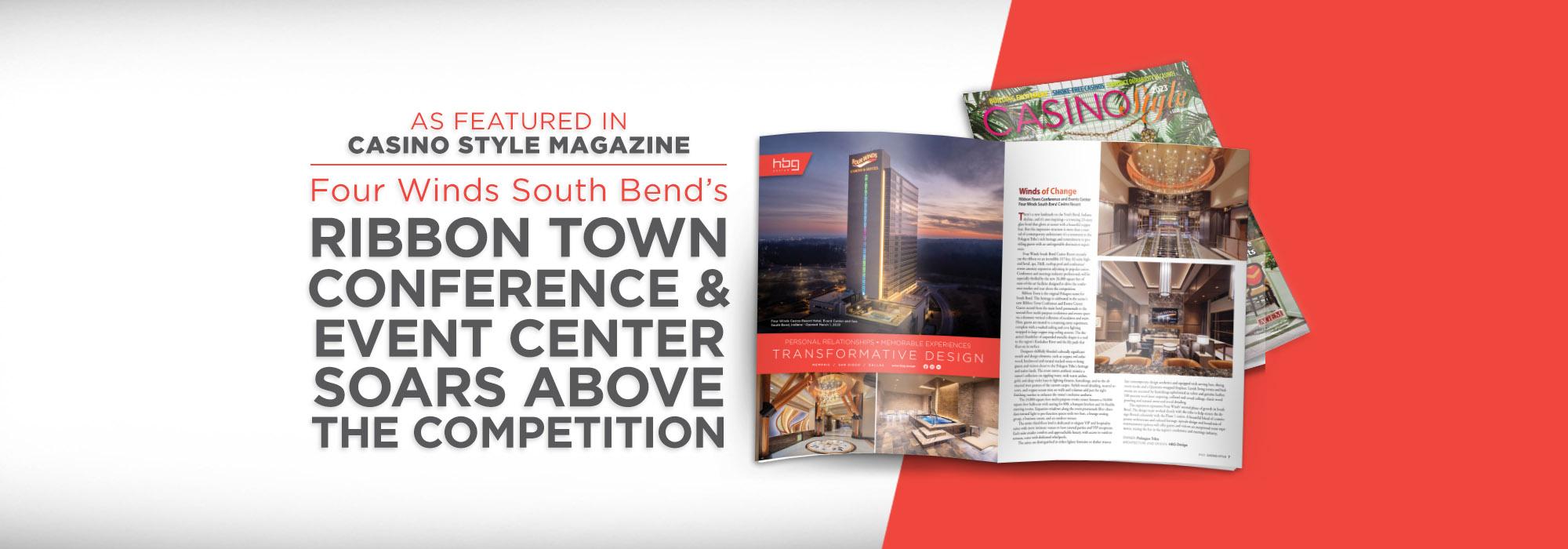
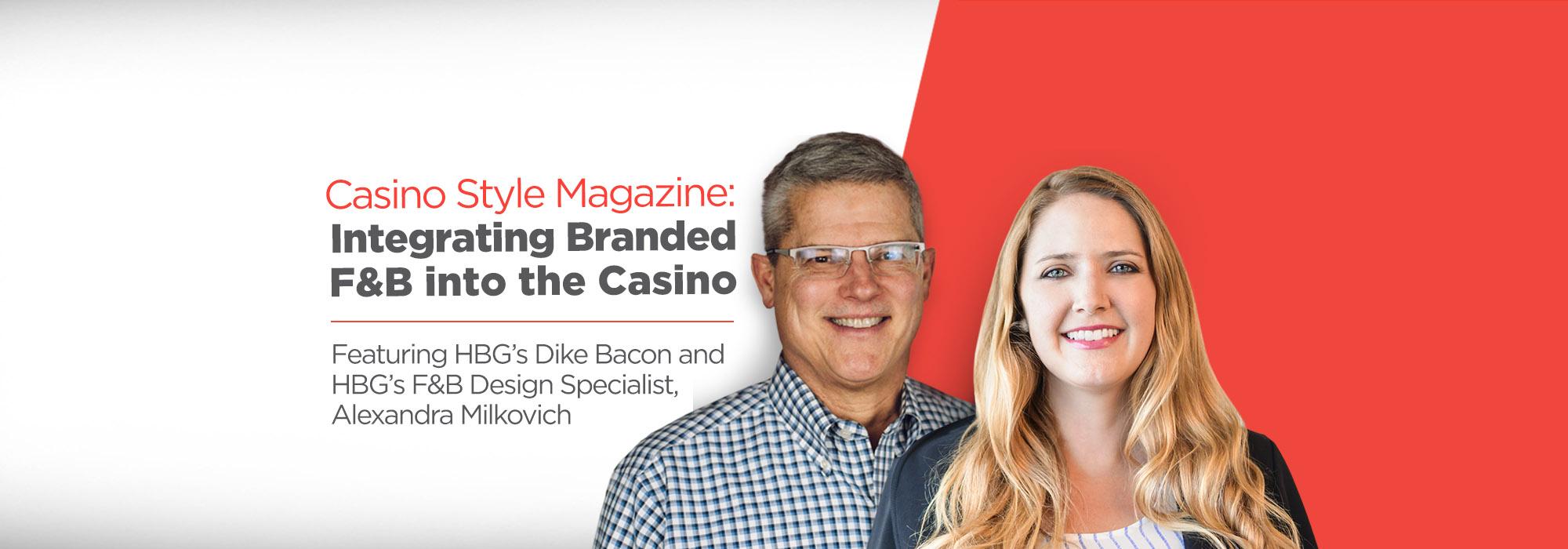
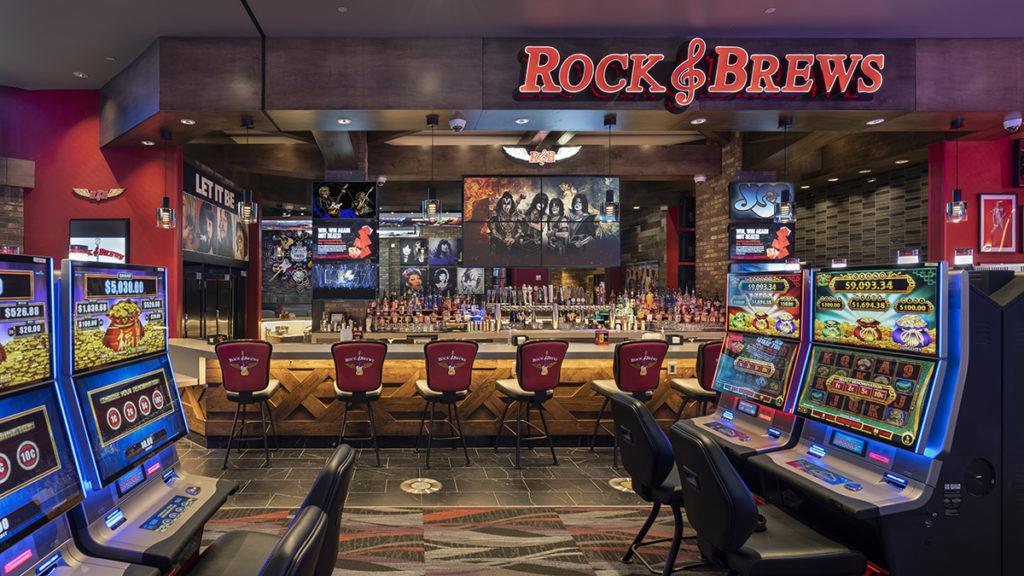 "In recent years, there has been continued interest in incorporating established F&B brands into the casino resort environment,” says Dike Bacon, principal at HBG Design. The concept of co-branding with high-profile chefs and companies is “gaining more traction with casinos as a means to broader market appeal and greater name recognition from an expanding customer base.
"In recent years, there has been continued interest in incorporating established F&B brands into the casino resort environment,” says Dike Bacon, principal at HBG Design. The concept of co-branding with high-profile chefs and companies is “gaining more traction with casinos as a means to broader market appeal and greater name recognition from an expanding customer base.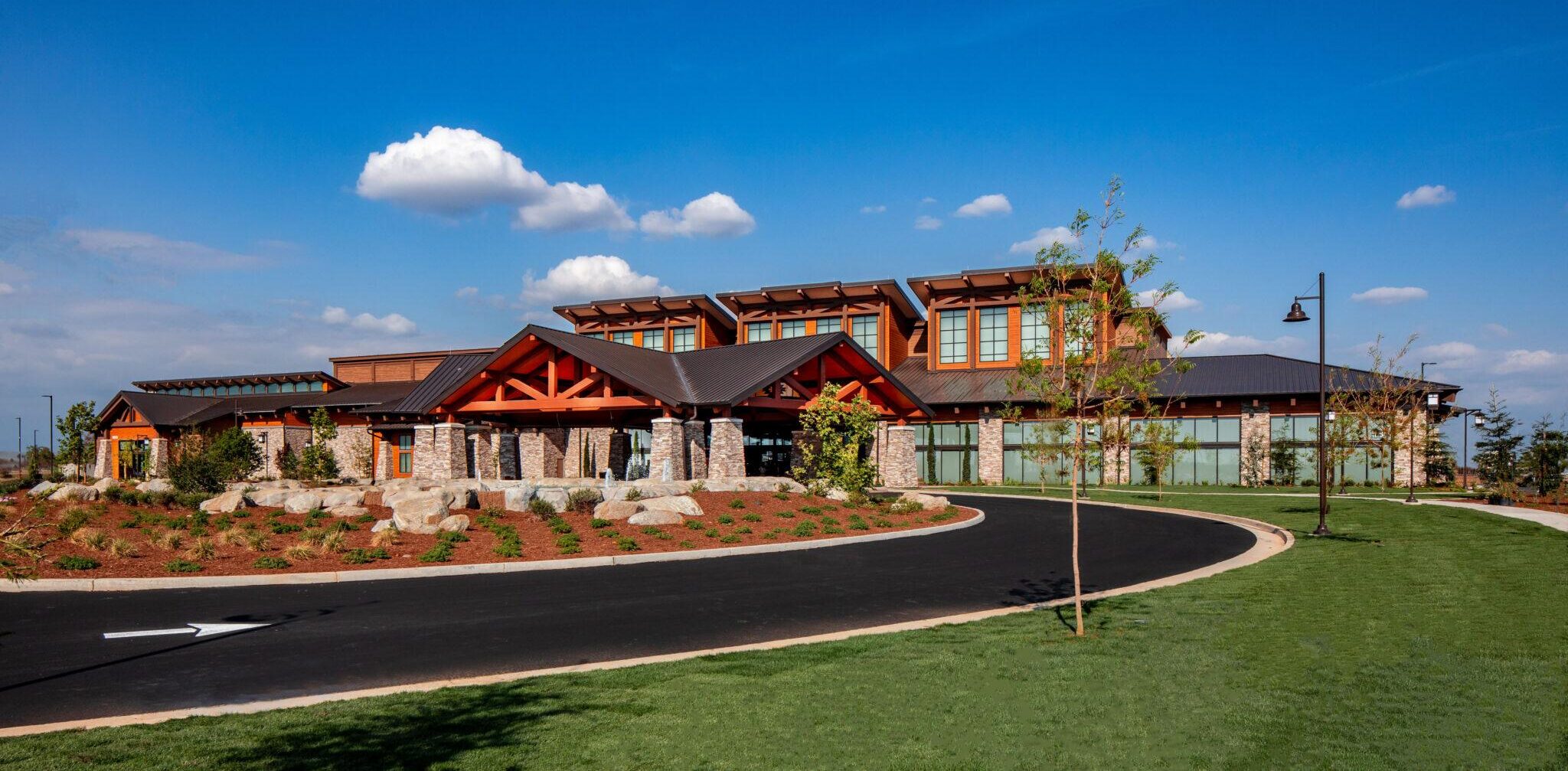
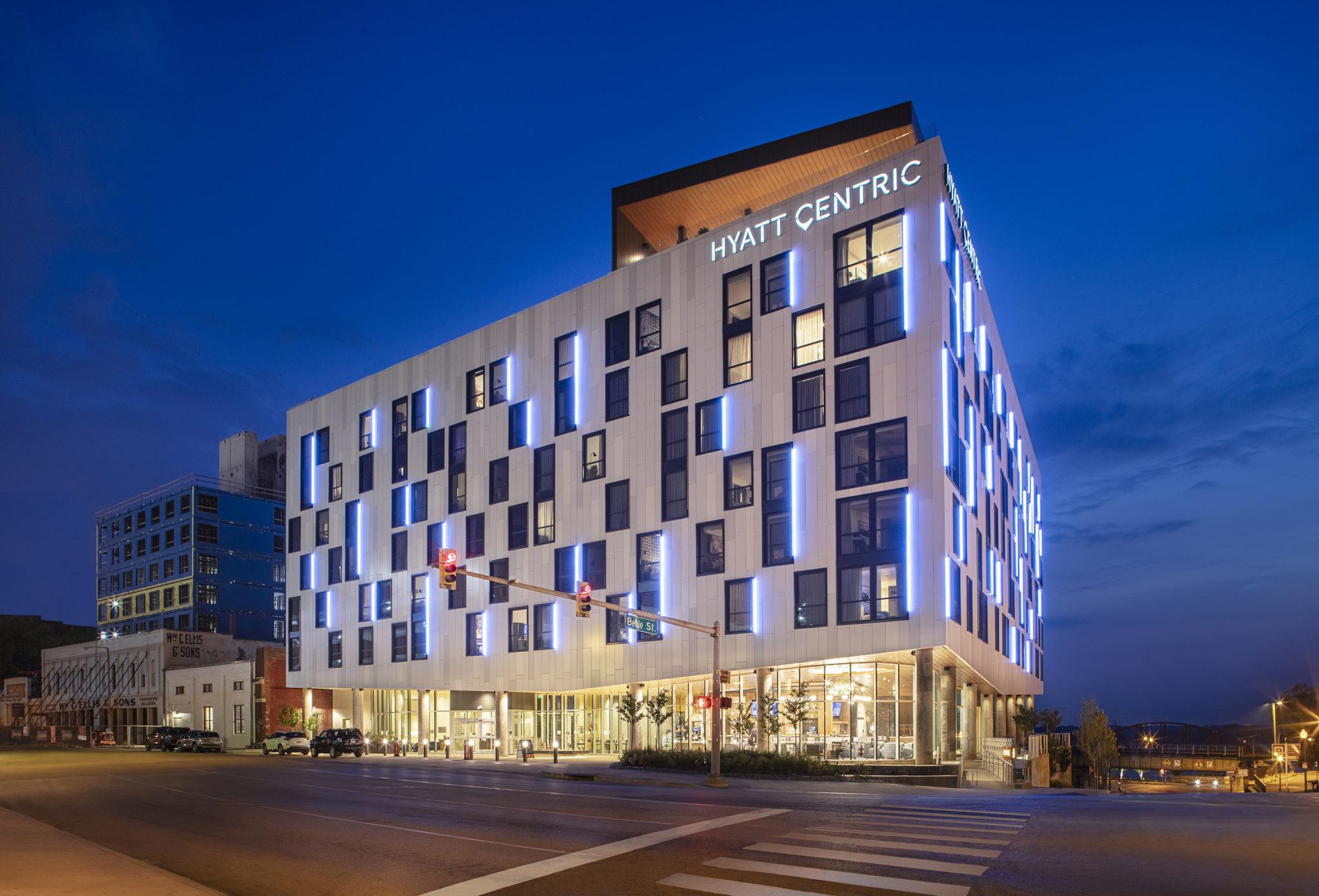
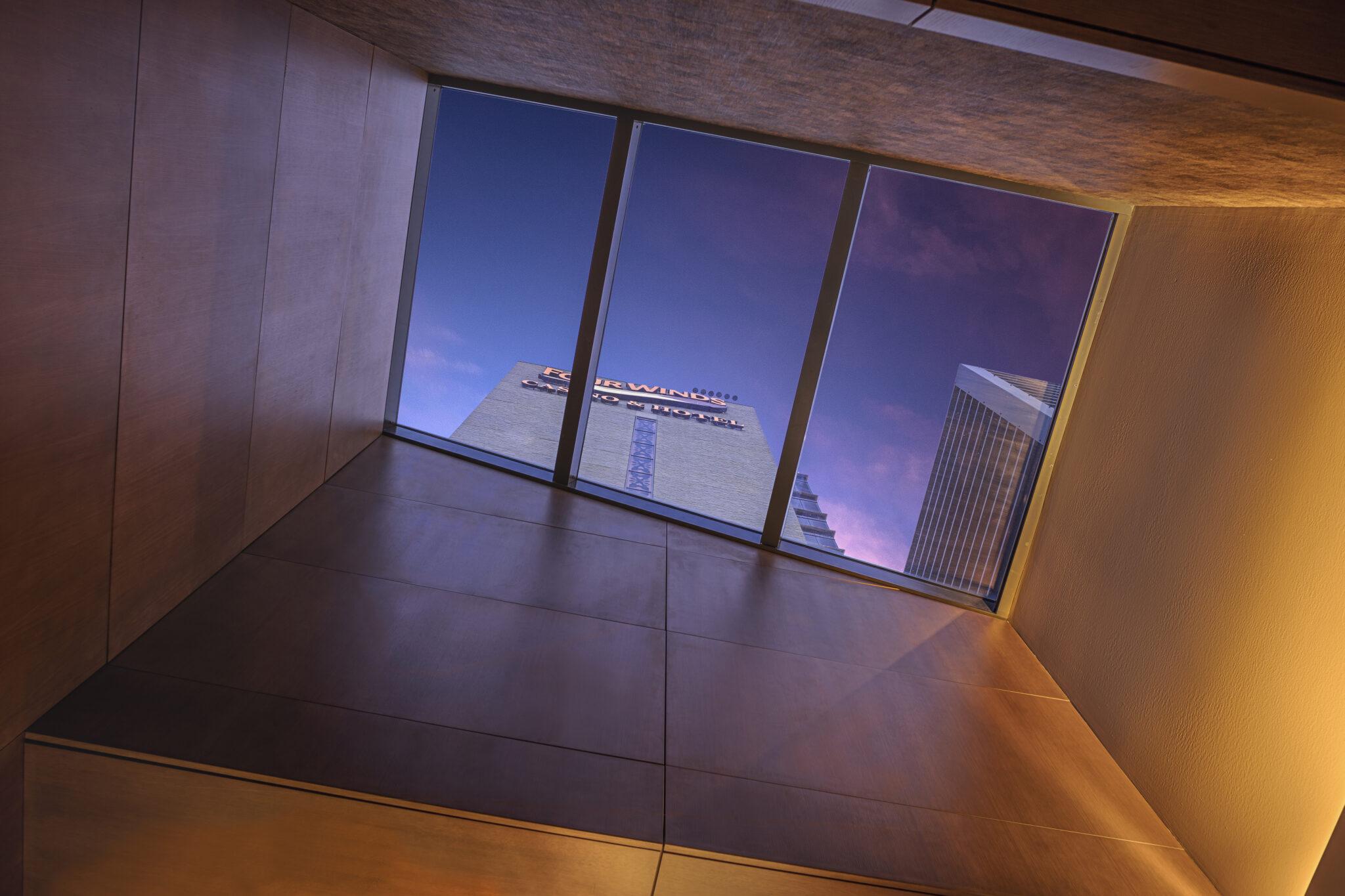

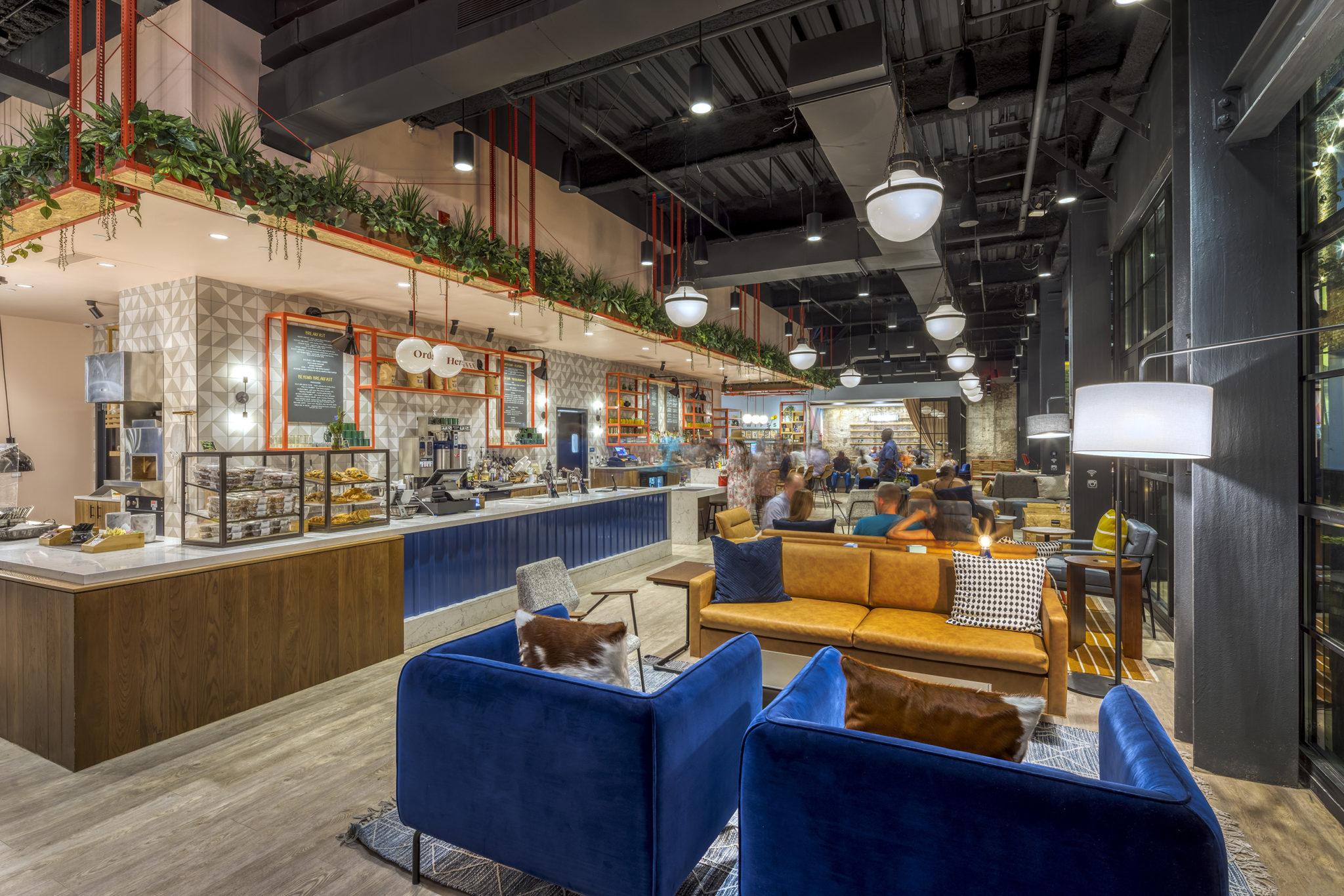
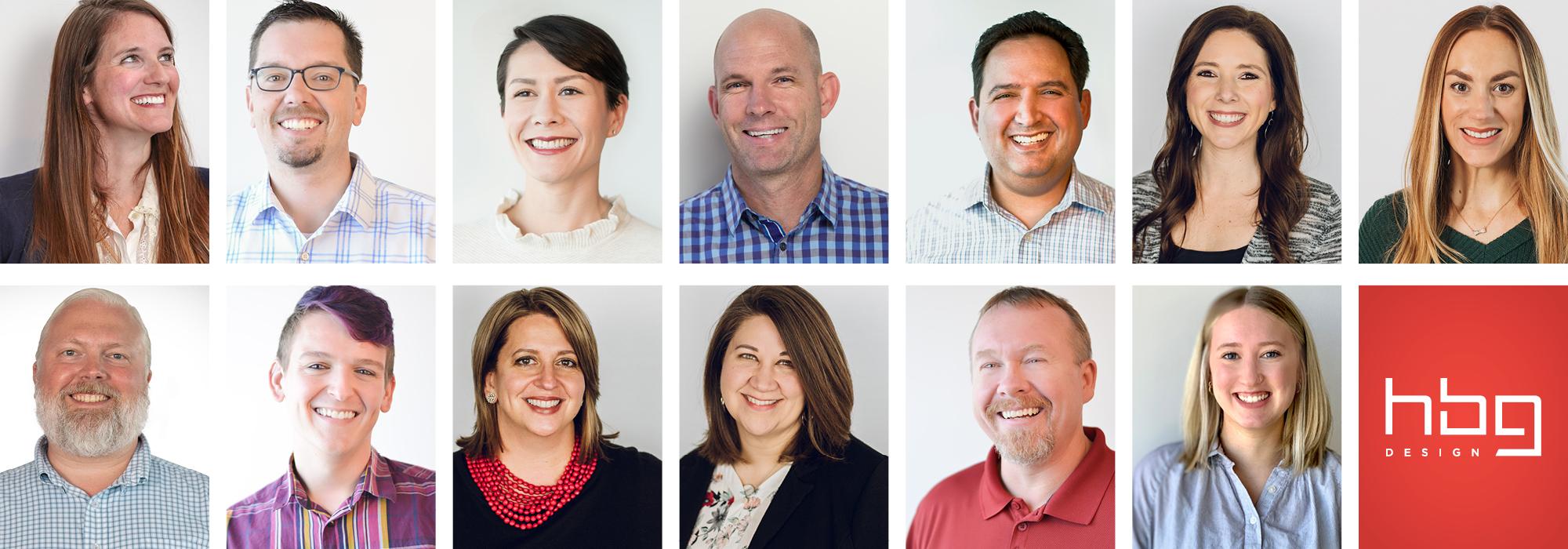
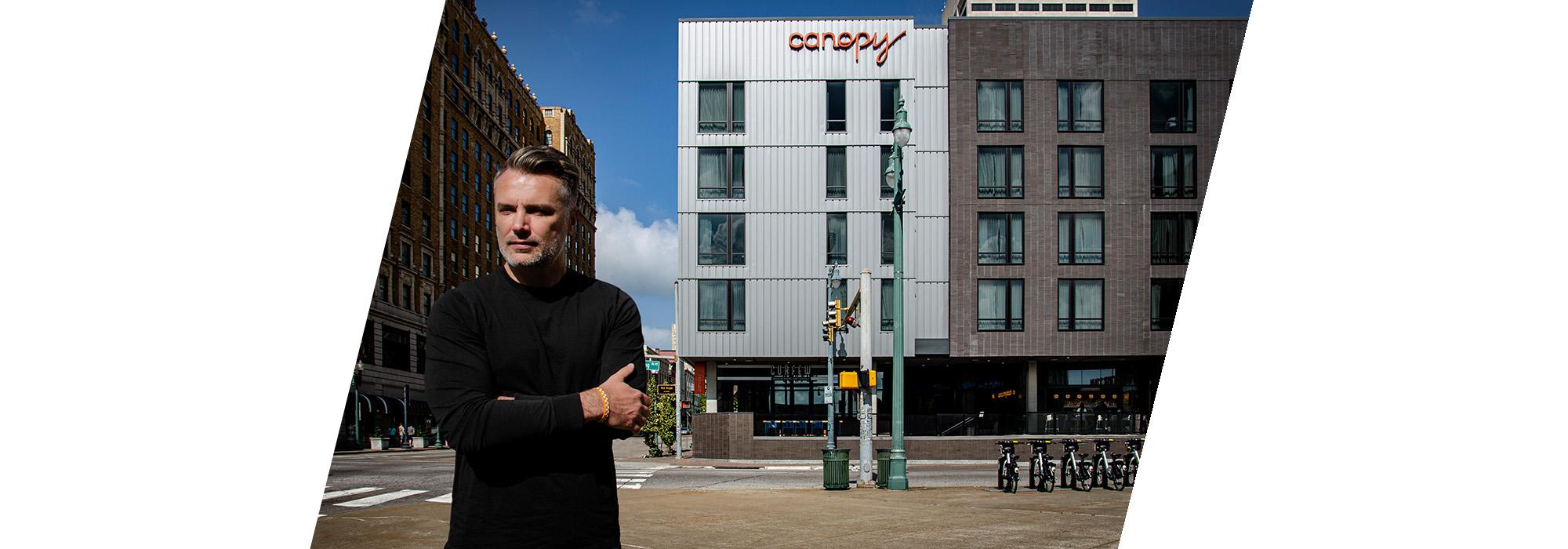
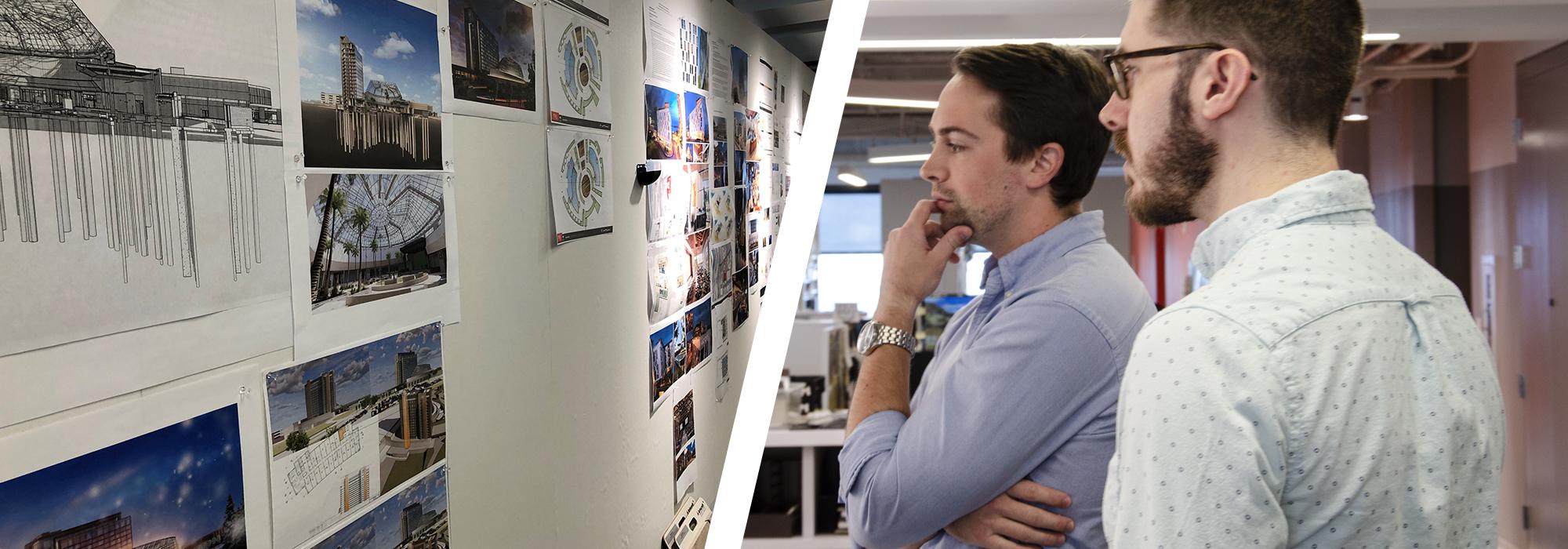

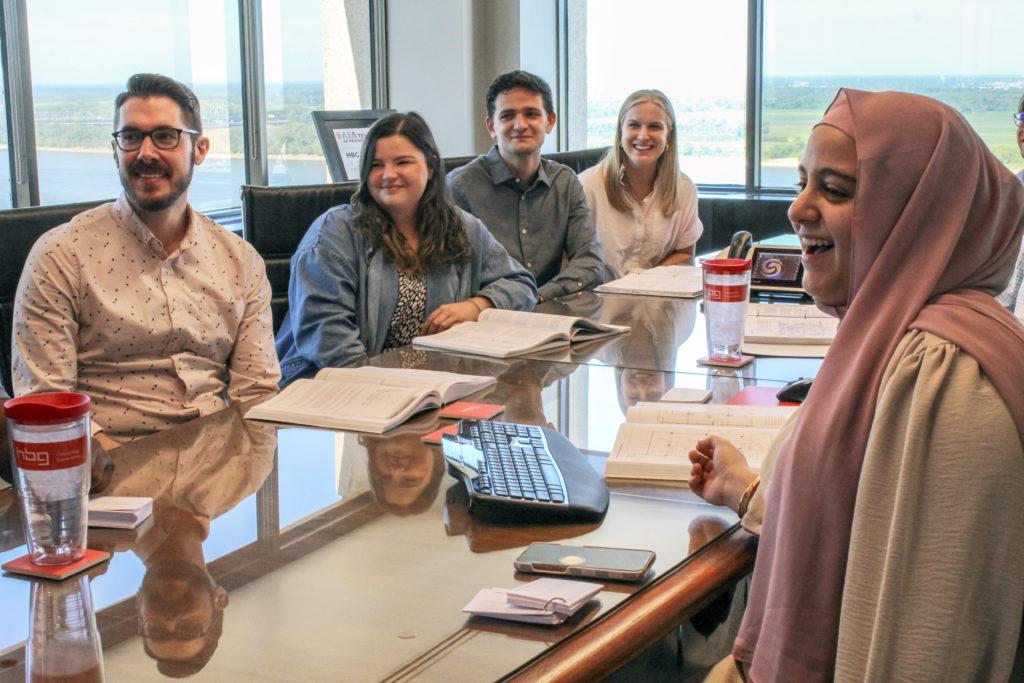
 The “work-from-home era” did teach us how to become more technologically resourceful and interconnected across distances. With more variety of tools enabling us to work virtually, we were able to put study information at each EP’s fingertips. All HBG’s EPS study information was organized, cataloged by topic, and made accessible through our MS Teams cloud-sharing platform. I’m proud to say we didn’t let the pandemic become a huge obstacle to getting our EPs help. For me, the biggest hurdle was just getting started.
The “work-from-home era” did teach us how to become more technologically resourceful and interconnected across distances. With more variety of tools enabling us to work virtually, we were able to put study information at each EP’s fingertips. All HBG’s EPS study information was organized, cataloged by topic, and made accessible through our MS Teams cloud-sharing platform. I’m proud to say we didn’t let the pandemic become a huge obstacle to getting our EPs help. For me, the biggest hurdle was just getting started.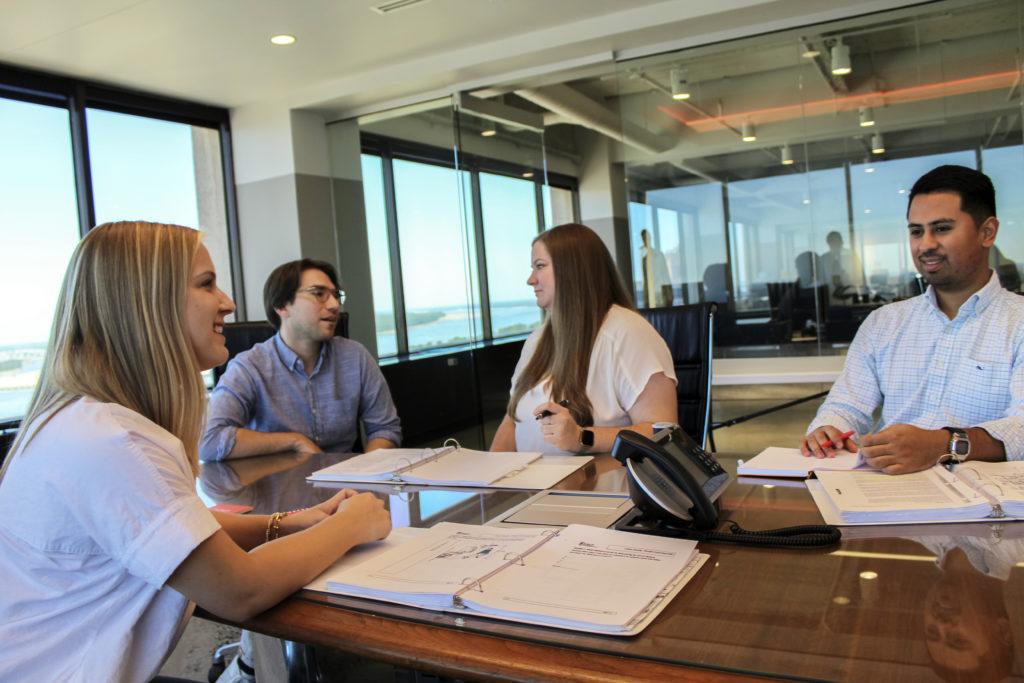 Knocking out AXP experience hours quickly is everyone’s goal when they get out of school, because there are a lot of hours required! EPS continues to coordinate supplemental training, quarterly site visits/project tours, exam study sessions, and professional engagement with design industry organizations. And our project staffing tracks EPs who are actively pursuing licensure to connect them with needed AXP hours.
Knocking out AXP experience hours quickly is everyone’s goal when they get out of school, because there are a lot of hours required! EPS continues to coordinate supplemental training, quarterly site visits/project tours, exam study sessions, and professional engagement with design industry organizations. And our project staffing tracks EPs who are actively pursuing licensure to connect them with needed AXP hours.